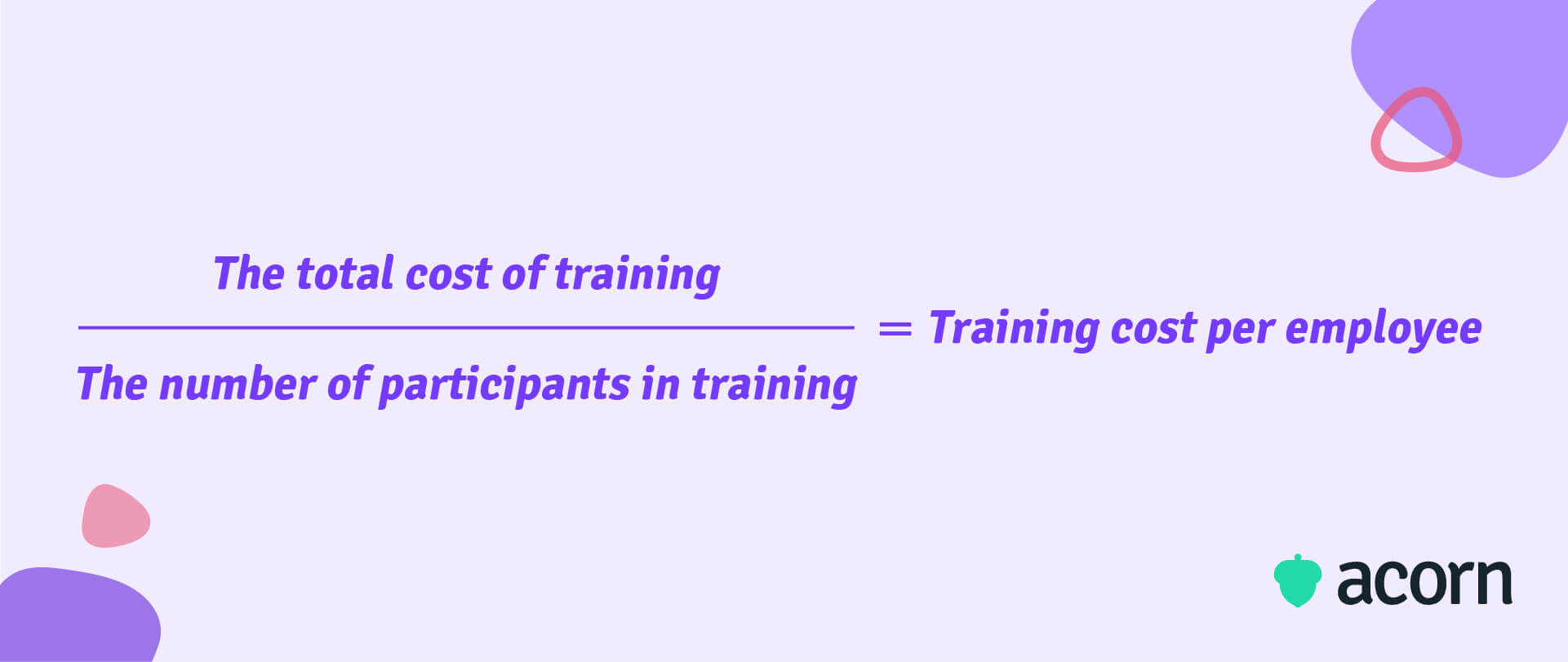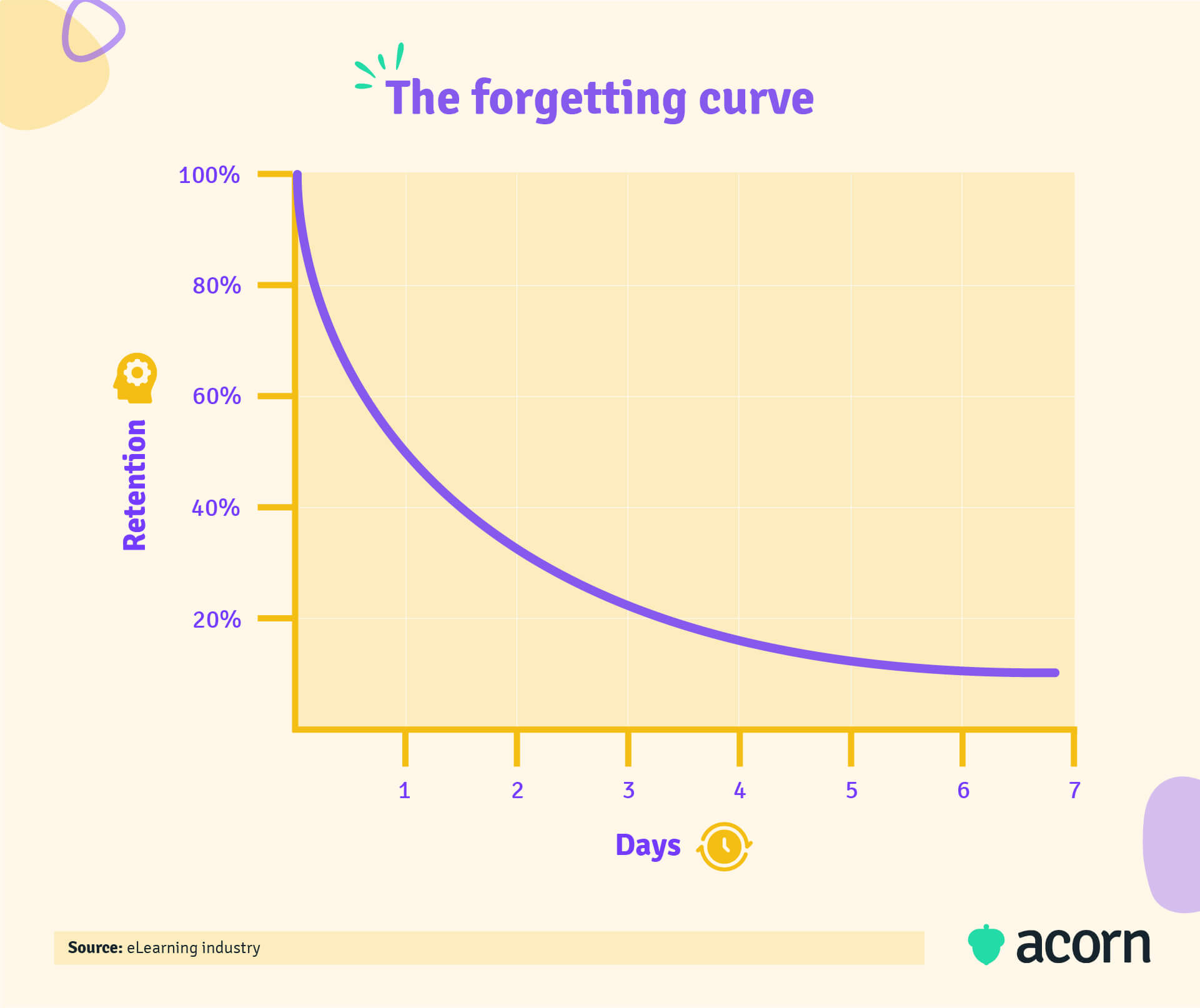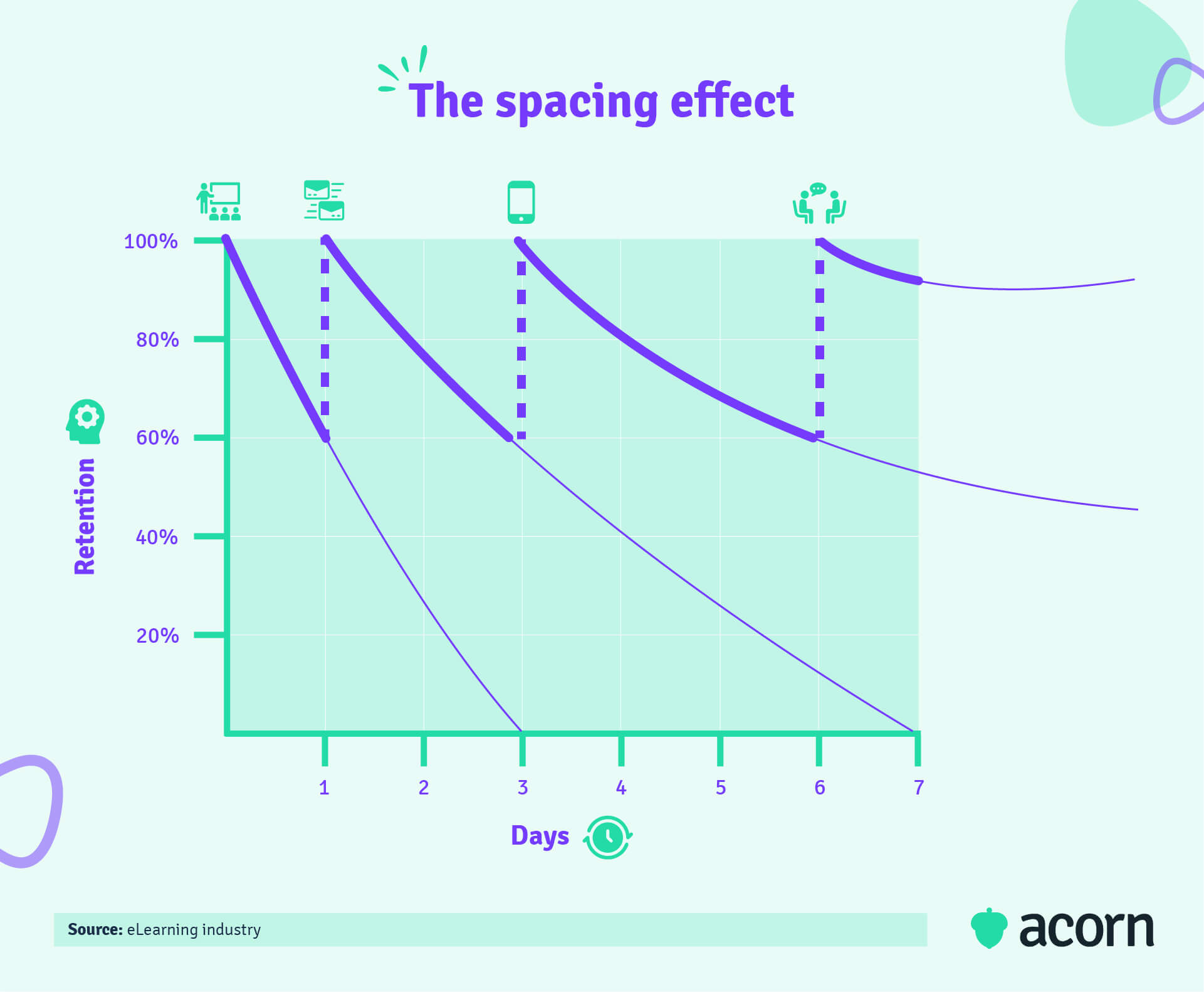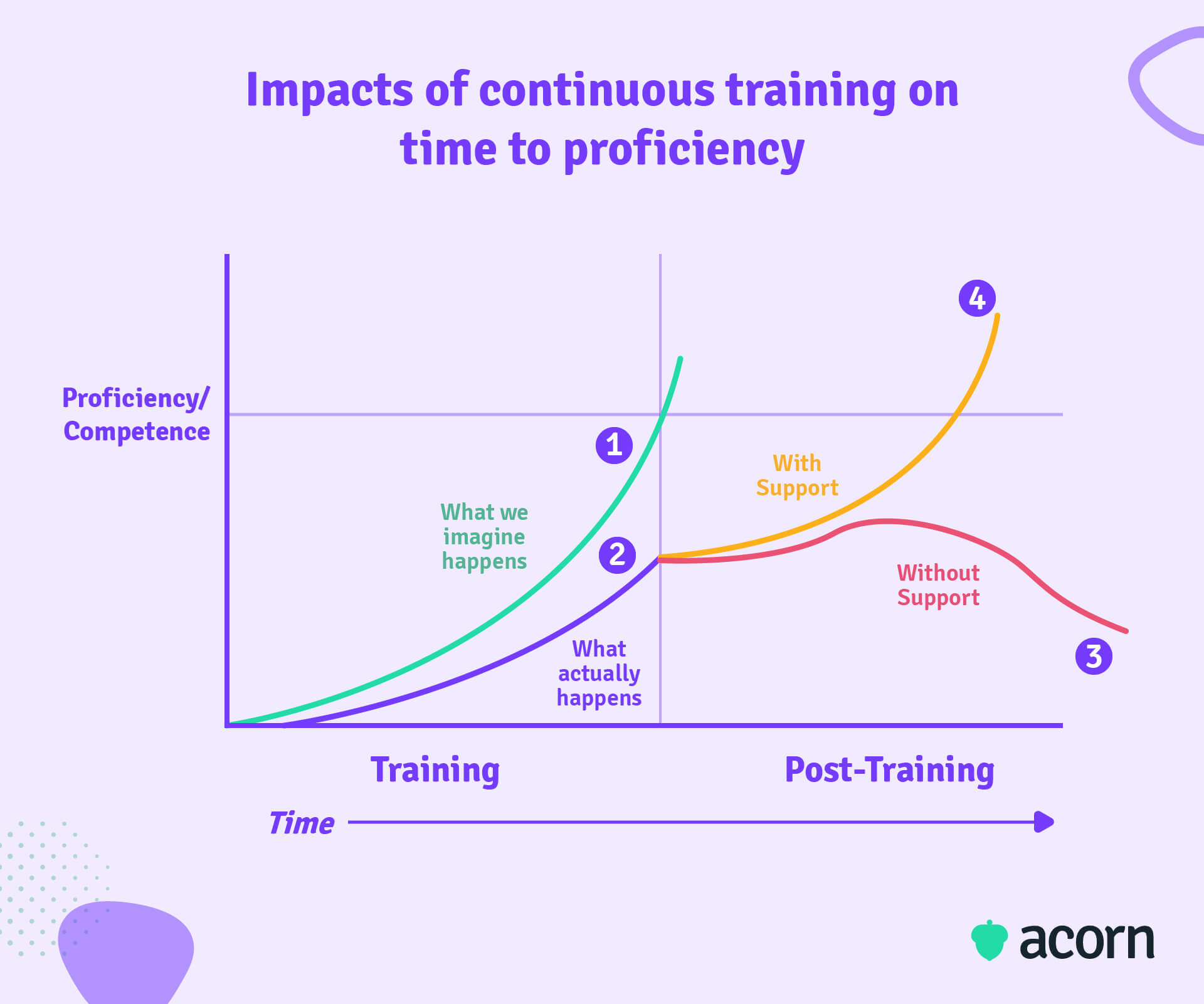Your Guide to the L&D Metrics That Matter for Proving the ROI of Learning
Reading Time:

Lead the pack with the latest in strategic L&D every month— straight to your inbox.
SubscribeL&D metrics are key to understanding the effectiveness of training initiatives within your business. But are you measuring the right things?
Rolling out learning and development programs is no small task, from planning and implementing training activities to measuring the impact of learning efforts on your organisation. It can be all too easy to roll out a training program, put employees through it, and sit back and wait for the results to benefit the company. Afterwards, there may be some heads scratched about why business results haven’t improved as much as was hoped. That, or maybe the direct results of training were completely forgotten about.
So, what’s the issue here? The problem is that training can’t be a set-and-forget task. It’s an ongoing initiative that needs to be measured and evaluated to ensure that:
- Your workforce is equipped with the right capabilities to carry out their job responsibilities and business functions.
- Your business impact and return on investment (ROI) are maximised.
Enter: Learning and development metrics, the key starting point to evaluating the effectiveness of L&D programs in your business. These employee training metrics provide learning and development teams with valuable insights on what is (and isn’t) working for learners and is the first of many steps to establish how well training marries into strategic priorities, and how it has directly benefitted the organisation.
What are learning and development metrics?
Learning and development (L&D) metrics are the measurements and indicators used to evaluate the effectiveness of an organisation’s training and development programs. They are an important part in allowing businesses to measure the effects of training efforts on employee performance, organisational strategy, and can assist in evaluating business impact.
In other words, metrics look at how well your training efforts are working to transform your organisational landscape to build the ideal future workforce.
Why you need metrics in L&D
Setting and forgetting learning programs just isn’t a viable option if you’re serious about improving your organisation for the future. At their core, L&D metrics have four main purposes:
- Evaluate the success of an individual training program
- Measure training effectiveness
- Align learning with organisational goals
- Evaluate the efficacy of individual elements of training.
So, how exactly do L&D metrics do this? L&D metrics provide you with data-driven insights into the effectiveness of training and development programs, giving you an initial understanding of how your training programs have positively (or negatively) impacted your organisation.
That is: How well have employees developed the necessary capabilities to deliver on your business promise?
Finding the link between L&D and performance is why we’ve pioneered the first performance learning management system (PLMS) here at Acorn. It captures things that are already happening (like your L&D metrics) and makes them easier to find and understand, allowing employees to learn and grow from L&D initiatives in a way that positively impact organisational outcomes.
Improving your organisation for the future
LinkedIn Learning’s 2023 Workplace Learning Report found that 89% of L&D professionals agree that being proactive about developing employee capabilities helps your business navigate the ever-evolving industry of the future. Since 2015, 25% of skill sets for specific job roles have changed, and that number is expected to double by 2027. So, it goes without saying that learning strategies need to be continuously improved as time goes on to ensure that your business is able to keep up with future demand, on top of meeting strategic goals and key performance indicators (KPIs) now.
Used correctly, L&D metrics are able to curate and present your learning data to show patterns in feedback, behaviour or performance that indicate potential underlying issues in your organisation. They allow organisations to make data-driven decisions in optimising their L&D activities, such as adjusting training activities to equip the workforce with the capabilities made necessary by changes in the industry.
Overall, this allows for more effective training programs, facilitating organisational agility when unexpected scenarios arise, and helping your employees meet future demand.
Measuring your business return on investment
L&D metrics alone can’t reveal business ROI. When used to fulfil their four main purposes, L&D metrics help provide an understanding of employee performance, allowing you to evaluate how well that performance contributes to your organisation’s return on investment (ROI). This is done by evaluating the effectiveness of training. In other words: By identifying the impact the training received has on employee performance.
Did training boost knowledge levels and the application of that knowledge to employees’ work, and if so, how did that bring business impact? Did it herald a change in employee behaviour, resulting in a more motivated, engaged, and confident workforce? Did it close skills gaps, knowledge gaps, or behavioural gaps? Did it help in developing business-critical capabilities in employees? These are all key indicators of how well employees have improved their performance since participating in training, driving an increase in operational efficiency, productivity, and most importantly, business impacts.
Using L&D metrics to understand your business ROI isn’t just about evaluating the effectiveness of learning and development programs, either. It’s about justifying the investment costs of training to make informed decisions for investing in future L&D initiatives that will increase business performance.
Ensuring better alignment with business objectives
In 2023, mapping learning to business goals is the top priority for L&D professionals. Everything from course content to individual training material must be designed to build learners’ capabilities in order to deliver on desired business outcomes.
This is where employee training metrics for L&D come into play. They’ll show you where your efforts to align learning to objectives have (or haven’t) succeeded.
For example, a capability-building program that is aligned with business objectives is more likely to have meaningful learning outcomes, given it bridges the employees’ day-to-day with business strategy. Over time, this creates more engaged and proficient employees. The organisation will be well on track to reaching its desired outcome. On the other hand, if learning is poorly aligned with business objectives, organisational performance may remain unchanged or even worse-off than it had been previously, as employees will likely lack the capabilities to carry out their jobs to the current industry standard.
In short, when you assess the business impacts of learning initiatives, you’ll see where your training materials are properly aligned with business strategy, and where that alignment could use some tweaking, allowing for stronger and more efficient L&D initiatives.
Improving engagement and retention
Employee retention remains a concern for 93% of organisations, especially now The Great Attrition has seen employees choosing to leave job roles in droves in favour of less traditional employment avenues. So, how do you keep your staff from handing in their resignation in search of better opportunities?
LinkedIn Learning identified five main reasons employees look for new jobs, with three of them relating to learning and development opportunities.
- Poor compensation and benefits
- Inflexibility in where and when employees can work.
- Lack of challenging and impactful work
- Few opportunities for career growth
- Few opportunities to learn and develop new skills.
Overall, it’s younger workers who care about L&D opportunities the most, with 31% of 18–34-year-olds looking for opportunities to learn new skills and develop their careers when searching for jobs. Plus, LinkedIn’s 2019 Workplace Learning Report found that 94% of employees would stay with a company longer if the organisation was invested in their development.
So, organisations need to provide learning opportunities to their employees to encourage and increase retention in their workforce. Of course, this is only the case when your learning programs are effective, but with the right metrics you can ensure they’re working as they should. (By boosting employee engagement, effectiveness of learning programs, and being relevant to employees and the business.)
The key L&D metrics
You can truthfully measure whatever you want from your training, including attendance rates, completion rates, and assessment scores. But your key metrics are the metrics that your C-suite really cares about, because they show the tangible impacts of training on the organisation.
We’ve found the crucial metrics you should use to measure the effectiveness of your learning and development programs.
Learning engagement
This is the factor determining whether your employees are motivated to engage with training programs. It’s the learner’s ability to be engaged in learning, both motivationally and behaviourally. Essentially, it’s the degree to which a learner participates in the learning experience, by being effectively engaged in the learning process, taking responsibility for choices, engaging in learning opportunities and being proactive in taking feedback.
How this metric works
The only issue? Engaging in learning isn’t the same as being engaged. In other words: Sometimes employees put the time and effort into a training course because they have to, not because their heart is in it. So, taking the following metrics at face value:
- Course completion rates
- Time spent
- Repeat visits to content
- Feedback and survey results, and
- Assessment scores
…Without looking into learner satisfaction, motivation or impact doesn’t accurately reflect learning engagement in an organisation. But, looking at metrics such as:
- Training ROI
- Learning transfer
- Knowledge retention
…Does reveal learning engagement, and therefore, the effectiveness and benefits of your L&D initiatives for your business.
Training cost per employee
This metric refers to the amount of money invested by an organisation on training each employee, whether for professional development or onboarding purposes. Understanding employee training costs enables smarter decision-making around justifying and setting L&D budgets.
How this metric is used
Employee training cost is typically calculated with one simple formula: The total cost of training divided by the number of participants in training.

But first, you need to understand what contributes to the cost of training. Training expenditures go beyond the cost of a single training program, including “hidden costs” like:
- Training materials. That’s workbooks, handbooks, printouts—resources used by participants during the training process. In remote or online training, this includes any online or shared resources and files.
- Instructor fees. The cost of hiring trainers, consultants, speakers, or other professionals who provide their expertise to lead training programs.
- Training method. Is your training offsite? Onsite? Are you using on-the-job training? If you’re using online options, are you using a learning management system (LMS)?
- Venue costs. Offsite training generally involves venue, and aside from the physical place itself, equipment (such as audio-visual gear) may need to be bought or rented.
- Employee time. Employees need appropriate compensation for their time. This includes hours spent at training and time spent travelling to get there, if it’s offsite.
- Administrative costs, i.e. insurance, equipment, supplies. If employees are required to travel somewhere, think of accommodation, travel and even catering costs.
The training cost per employee metric isn’t one that means much when used on its own. But combined with others, businesses are able to measure their ROI, or justify their L&D spend.
This means—essentially—cutting out the fat. Is too much being spent on individual employees? Find something cheaper. Is the cost high compared to training of a similar quality? Find something more cost-effective. It’s all about evaluating training to create the most effective learning experience possible, from the point of learning design to actual delivery for learners.
Knowledge retention
Knowledge retention is the process of absorbing and retaining information to long-term memory, rather than short-term. Knowledge retention is an important one to measure, as it tells you if business-critical skills, behaviours and expertise are being applied on the job. In other words, it’s another way to assess the transfer of learning.
The application of acquired knowledge, information and skills from training proves long-term training value and ROI through key performance indicators.
Why this metric matters
The idea is to ensure that your company has a competitive advantage, by arming employees with business-critical knowledge to achieve business objectives. The only problem is just teaching the information your employees need isn’t enough for them to retain the information and apply it to their jobs. Knowledge will inevitably be lost without continuous reinforcement.

So, for training to be effective, you need to be able to see that employees have learned, retained, and applied new knowledge to their day-to-day. With knowledge retention strategies like spaced repetition, employees are more likely to find training effective, retaining more information and being able to apply that knowledge to their roles. The better your knowledge retention strategies, the greater productivity and business performance becomes.
Ongoing and continuous learning can happen through microlearning, shared learning experiences or learning management systems which facilitate learning in the flow of work.

Impact of training on performance
The impact of training on performance is essentially your training effectiveness at work. It’s a measure of how well training programs impact employee performance in line with your organisation’s expectations for transfer of learning. In other words: Whether or not your training has had the desired business impacts.
How this metric is used
How do you figure out how much performance has improved as a direct consequence of training? You set guardrails, of course. This is where using a Kirkpatrick evaluation model comes into play. You can use it to set benchmarks for business outcomes, employee behaviours, and transfer of knowledge, all in one go.
It goes like this:
- Reaction. The bottom level of the Kirkpatrick Model, which doesn’t yet focus on strategic outcomes. It’s more concerned with immediate data about training engagement, from completion rates to progression rates.
- Learning. This is where transfer of learning comes into play, indicating how much information is retained and put to use. It’s also where improvements in performance start to be seen in the form of reduced time to proficiency and the application of knowledge.
- Behaviour. Behavioural change and learning cultures are what really start to show knowledge retention, so this level looks at how employees’ behaviours have changed over time as result of training. This change can be measured in employee evaluations and capability assessments.
- Results. That is, business outcomes. We’re talking outcomes like employee retention, revenue growth, or improved operational efficiency, among others. These outcomes are what L&D activities should be designed around for the best chance at meeting goals.
Training feedback
Training feedback is the process of gathering information on training programs from your program participants with the purpose of identifying areas for improvement. It’s not exactly the same as training evaluation, which looks more into training effectiveness and business impact after the fact.
Why this metric matters
This metric is a bit more subjective, and needs to be done at the right time in the right way to get the best results. That is, don’t wait too long after training to gather feedback, and make sure you’re asking the right questions.
Essentially, it’s a method of getting learners’ opinions on the training programs they’ve participated in. And while not all opinions on provided training courses will be relevant to the efficacy of L&D initiatives, it can reveal patterns of feedback that might indicate underlying issues in the offered courses. For example, feedback on training might identify:
- Training material does not reflect employees’ day-to-day responsibilities.
- Training outcomes don’t accurately reflect job roles or learning pathways.
- Training isn’t aligned with business goals and outcomes.
Training feedback helps you identify areas in your training activities that need updating or adjusting to make the process more streamlined and engaging for learners, as well as more effective at delivering on learning outcomes. This allows for training to be improved consistently for the future, driving changes to training design in line with learner needs.
Time to proficiency
Also known as ramp time, time to proficiency is the time taken by an employee to develop the capabilities needed to perform in a new job role at an acceptable level. Generally, this metric is measured in two instances:
- When a new starter begins at your organisation
- When an employee moves into a new role.
Why this metric matters
It can take eight months for a new hire to reach full productivity, while new leaders can still be underperforming 18 months after assuming their role. Plus, given new hires have a turnover rate of 23% in the first year (usually due to poor onboarding), an organisation can be facing at least a years’ worth of lost productivity.
The simple answer to this problem is—you guessed it—good onboarding. But that’s easier said than done. Organisations can’t rely solely on training to reduce time to proficiency; rather, they need to use training alongside ongoing support and feedback to reinforce ideas and correct mistakes in the moment.
- Ongoing training like on-the-job learning and online centralised knowledge systems (think: eLearning modules) can be accessed in the flow of work, aiding knowledge retention.
- Support and mentoring provides new hires and managers with coaches, mentors or role models to impart necessary organisational knowledge and correct mistakes or detrimental behaviours with real-time feedback. For new hires this could look like a “buddy” who is their first point of contact. For managers, it’s about being mentored on business perspective and context.

So, how does this metric show training efficacy? Building the right capabilities, at the right time for each learner is what reduces that time to proficiency. Using a competency model alongside your time to proficiency metric shows how an employee’s proficiency at their job has increased as a result of training, and therefore, how their performance has made business impact.
Training ROI
Training ROI is to the dollar amount an organisation makes as a direct result of investing in training. Specifically, it shows how much value is generated by the knowledge, behaviours and expertise learned by employees in company-provided training. ROI is essentially the only metric that focuses on the benefits to the organisation rather than the benefits to employees.
Let’s say a company calculates their training return on investment (ROI) and discovers that their ROI is lower than expected. It could indicate ineffective training, or that the training itself was cost-inefficient. Training ROI allows businesses to justify their L&D budgets and resourcing for future training activities, identify cost-saving learning opportunities and make data-driven decisions on training investments to maximise business impact.
How this metric is used
This metric is necessary to justify and measure L&D initiatives, because it shows a clear link between training and business impacts to highlight training effectiveness in a way that measuring attendance or a training pass rate simply can’t.
You can calculate training ROI with an equation that shows the monetary value returned to your organisation for every dollar spent on training programs.

Just like the cost of training per employee metric mentioned above, ROI requires you to include your total cost of training, including all the hidden costs. So, the cost of an LMS, the development of training materials, or the cost of renting a venue all contribute to the total cost of training and your ROI calculations.
There are three key ways in which you can measure training ROI.
- The Kirkpatrick Model
- The Phillips Model
- An impact study.
These three methods show the change in employee behaviours, knowledge, and skills training achieved, drawing a link to business performance and impact as a direct result.
Establishing baseline metrics
L&D metrics don’t mean much in a vacuum, which is why you need to establish your baseline metrics first. Baseline metrics, or baseline measurements, are the jumping-off point for future measurements to benchmark against and track progress with, and generally come from previously collected data.
In other words, you need to know what employee performance was like before training, in order to see how well it’s improved after training.
There are five simple steps to establishing your baseline metrics for L&D initiatives.
- Identify the relevant metrics. These are your employee performance metrics, like learning engagement, training effectiveness, and training costs.
- Collect data on those metrics. Use surveys, interviews, performance evaluations. Remember, these are your baseline metrics, so data on these should be collected before training programs are implemented.
- Analyse data. This analysis is what establishes your baseline for each metric. What was the total cost of training, or revenue brought in? What were the KPIs and how well were they met?
- Set targets for the future. You have your baseline metrics and now all you need to do is set targets for each metric based on your training objectives and business strategy.
- Monitor progress. Once a training program is implemented, measure again to compare to your baseline. This helps you assess the effectiveness and efficiency of training activities and identify any areas for improvement.
How technology makes L&D metrics easier
Gone are the days when L&D teams had to collect data manually and coordinate across departments for access to learning data. It’s a long, time-consuming and painstaking process, and it’s not hard to imagine why some organisations dread doing it—or don’t do it all—as a result. The issue is that L&D metrics need to be recorded to make any meaningful decisions regarding learning initiatives.
We’re not the first to suggest making use of the new technologies changing the way L&D metrics are collected and analysed. We won’t be the last to do so, either. Utilising some kind of software to automate the collection and analysis of data saves time, effort and money on your part. This can be done with an LMS or internally-built and centralised data system.
Using technology to help collate and evaluate data assists in:
- Automated data collection and real-time reporting. With an LMS or other HR analytics software, you can automatically collect data on how your employees interact with training. Data like engagement with training materials, completion rates, and learning outcomes and feedback can be collected and analysed entirely within the system in real time, allowing for the quick identification of improvement areas.
- Predictive analytics. With advancements in technology allowing organisations to centralise and digitise their data, businesses can now have technology automatically run predictive analyses. This can reveal trends and patterns in employee performance and training effectiveness faster than if organisations analysed the data manually, meaning that businesses can identify issues and implement solutions sooner rather than later, making data-driven decisions and optimising business performance.
- Gamification of learning. This allows for learning to be more engaging, interactive and motivating for learners to participate in. Game-like elements like points systems, badges, rewards and leaderboards help keep learners motivated in development activities in a way that wasn’t possible (or was more difficult) prior to the digital age.
- Mobile learning. Shorter attention spans, busy schedules, and the necessity of learning in the flow of work means that easily accessible learning methods like mobile learning have become more popular. Employees are able to access learning materials anytime, anywhere, in short bursts of microlearning that allow them to find the information they need without hindering productivity.
- Personalised learning. The thing with capability-building is that not all employees start with the same capabilities or knowledge levels, meaning training needs to be tailored to get individuals to the competencies they need. This is time-consuming, but LMSs can utilise data on employee performance, capabilities, and learning preferences to develop customised training programs, allowing for more engaging and effective learning as well as business impact.
Measuring business impact vs. L&D metrics
Historically, learning has been measured within the LMS. That’s why this L&D metrics article is key. But as we’ve discussed above, it’s only a starting point for you to build from. The focus of measurement is on the metrics that learning systems can capture, which means your L&D reporting is limited to the functionality of your metrics and reporting method.
For example, the metrics recorded in an LMS include completion rates, engagement in training, and perhaps even the competency levels of your capabilities. But this is a snapshot of learner activity, not true L&D impacts. It’s like measuring study over actual learning, or assessing how many pages of a textbook a learner read over the use of learned knowledge post-assessment. L&D metrics on their own can’t give an in-depth analysis of the business impacts of your learning initiatives.
Learning—real learning—is a shift in behaviour. It takes place in the workplace when employees are performing their duties, which shouldn’t be unsurprising given that’s the aim of any workplace training you’re offering. In contrast, there is little test-based learning that has any real business impact within an LMS. We get that our learning management system competitors have an opposing view, but we all know the reality.
The new path forward
Before you start, clearly define which capabilities you want to develop and transform. Have a clear definition of what the capability is as well as its defined levels of competence, which you should use to assess an individual, team, cohort or business on their current level of competency.
This is the point where you can begin to provide targeted training through whatever means are best. Set a time in the future after training is complete to reassess competence levels in those capabilities. It will allow you to see how all the investments in learning (such as workshops, coaching, online courses, mentoring, lessons in the field, osmosis in the office and so forth) play together.
Then you’ll see true learning measurement, and true business impact.
Key takeaways
L&D metrics are useful in measuring the effectiveness of an organisation’s training initiatives, the impact of training on employee performance and how that feeds into business impact and organisational strategy. At their core, they’re about assessing how well learning and development activities build mindsets and behaviours in the workforce that repeatedly deliver gains.
Remember that you can’t use any given L&D metric in isolation. They need to be measured in tandem, both with each other and defined capability maps and competency frameworks to understand the full extent of training impact and effectiveness.
Most importantly: Evaluating L&D metrics is just one step in the ongoing process of measuring business impact. It can help inform your understanding of the business impact of training, but it can’t reveal that impact on its own.